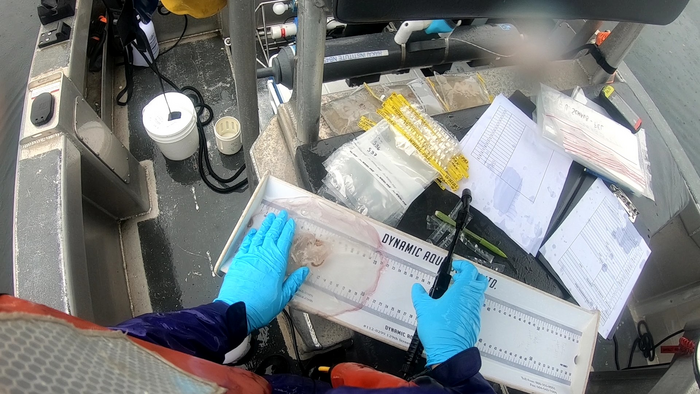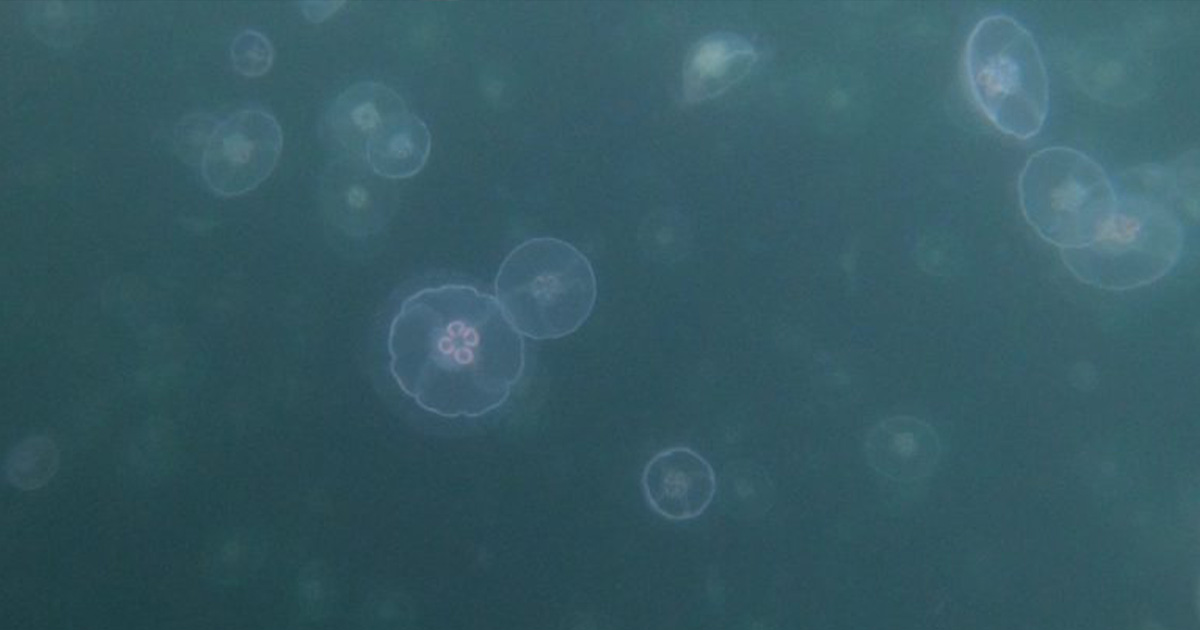Drifting along in ocean currents, jellyfish can be both predator and prey. They eat almost anything they can capture and follow the typical oceanic pattern of large eats small. Now a recent University of British Columbia study on these gelatinous globs suggests jellyfish may get more nutritious as they get bigger.
As jellyfish grow, their size changes largely due to the chances of prey encounter, the length and number of tentacles, and their bells (the umbrella-like part of them). As a result, smaller jellyfish eat phytoplankton, microzooplankton, and eggs, while larger jellyfish can eat all of that, plus shrimp and even fish. However, jellyfish are also largely preyed upon by animals in and out of the water. Jellyfish are important prey because they are easy to digest due to their high water content, and they are easy to catch.
"Our study looked more closely to see if there was any information we could draw about nutrition in jellyfish," said Jessica Schaub, lead author and a UBC Ph.D. student at the Institute for the Oceans and Fisheries and the Department of Earth, Oceans and Atmospheric Sciences.
"This information helps us understand the true value of jellyfish as food. We looked at how the energy that moves through a food web might look as it moves through jellyfish. What they eat, what they are composed of, and how this might affect what eats them." In Heriot Bay, B.C., for example, the moon jelly may often find themselves being eaten by other jellyfish, fish, and other invertebrates.
Schaub, and her team, which includes associate professor Dr. Brian Hunt, who heads the Pelagic Ecosystem Lab at the Institute for the Oceans and Fisheries, took a look at how jellyfish size, diet, and nutritional quality all mesh together. Nutritional quality can reflect an organism's life history—the composition of a jellyfish can change in response to individual changes in diet and physiological changes.
The team, over two one-day periods in July and September 2019, collected 150 moon jellyfish and measured their size. After drying them, they measured the jellyfish for specific compositional elements.
 Measuring the jellyfish. (Image credit: Jessica Schaub)
Measuring the jellyfish. (Image credit: Jessica Schaub)
Schaub described what they discovered.
"First, we confirmed what was already known: jellyfish eat bigger prey as they grow, which means they also occupy a higher position in the food web as they grow," she said. "We also found that some of the concentrations of 'healthy fats' increase as jellyfish grow. We found some evidence that these changes might be influenced by their diet, and as they feed on bigger prey with higher levels of fatty acids, the jellyfish accumulate more of these fatty acids."
"This means bigger jellyfish might be considered more nutritious," said Schaub.
The study found size trends that emphasize just how important it is to consider jellyfish size when we are talking about marine food webs. Including these creatures will not only help their representation in food web models but can also inform other studies.
Looking towards the future, Schaub described what may come next.
"Our recommendation for future studies on jellyfish predators is to consider size more thoroughly. Feeding on a young, small jellyfish is different than feeding on a larger and older jellyfish."
Journal Reference:
- Jessica Schaub, Anna K. McLaskey, Ian Forster, Brian P. V. Hunt. Size‐based changes in trophic ecology and nutritional quality of moon jellyfish ( Aurelia labiata ). Ecosphere, 2023; 14 (3) DOI: 10.1002/ecs2.4430



